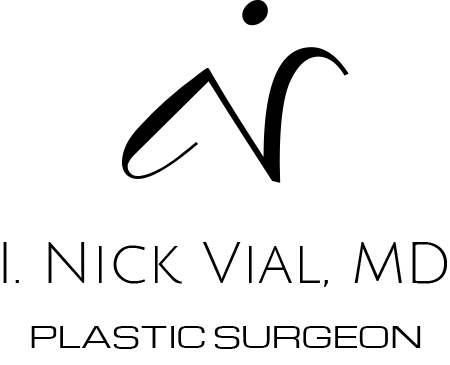Liposuction is one of the most common surgical procedures performed by plastic surgeons. It is not a weight loss tool; it is used to remove fat from stubborn areas that are recalcitrant to exercise. At invMD Plastic Surgery we provide liposuction in Bend to eligible clients.

What is liposuction?
Liposuction procedures use a suction apparatus to remove fat from the body. The access sites leave scars that are less than a half-inch when healed.
What are the commonly targeted areas for liposuction?
- Upper arms
- Chest
- Upper back
- Lower back
- Abdomen
- Flanks
- Buttocks
- Thighs
Who is a candidate for liposuction?
In general, candidates for liposuction in Bend:
- Are in good physical and mental health
- Have a body mass index below 35
- Do not have underlying medical conditions that preclude surgery
- Are non-smokers or are willing to stop smoking one month before and one month after the procedure
- Do not use nicotine products, or are willing to stop using products one month before and one month after the procedure (gum, chews, patch, vape)
- Are not exposed to second-hand smoke
- Have realistic expectations from the surgery
Why isn’t liposuction considered a weight loss tool?
Liposuction is a surgical procedure that suctions away unwanted subcutaneous fat tissues from targeted areas of the body. However, liposuction isn’t a weight loss procedure, and it can only remove a limited volume of fat cells from any region. To understand how liposuction works for body contouring, you must understand the basics of fat distribution.
The adult human body has a uniform number of fat cells. When you gain or lose weight, the existing fat cells increase or decrease in size, but the number of fat cells remains stable. Some parts of your body have more fat cells than you’d like, which is why they are often resistant to exercise, dieting, and other weight loss methods. Liposuction vacuums away fat cells from targeted regions of your body, thereby changing the proportion of fat cells in your body. As such, liposuction in Bend is ideal for body contouring, but it’s not meant for overall weight loss. Dr. Vial’s practice is in line with recommendations from the American Society of Plastic Surgeons, which advises avoiding cosmetic liposuction in patients with a body mass index greater than 35.
What happens to the skin after liposuction?
After liposuction, if you have good skin elasticity, your skin will mold itself around the new contours. However, if you have poor elasticity, you may have excessive skin laxity or redundant skin in the target areas. You may need additional body contouring surgeries to trim away the redundant skin and improve the overall cosmetic results. Dr. Vial will carefully examine your skin quality and determine if you should proceed with liposuction or if you should consider other potential alternatives.

How is liposuction performed?
Your liposuction journey starts with a private consultation with Dr. Vial. Dr. Vial carefully examines your abdomen and discusses your goals and expectations. Based on your unique condition and expectations, he creates the ideal surgical plan for you.
Liposuction is performed as an outpatient procedure under sedation. Dr. Vial will mark circles and lines on the targeted areas of your body before the procedure. He will inject a solution of salt water, lidocaine, and epinephrine into the targeted area. The salt water facilitates fat removal, the lidocaine alleviates pain, and epinephrine constricts the blood vessels to reduce bleeding. Finally, he inserts a tube-like device called a cannula under your skin to suction away the unwanted fat cells.
What is the recovery process after liposuction?
How you recover in the three months after your surgery determines the outcome for years to come. Dr. Vial will provide a list of step-by-step recovery guidelines after your surgery. After liposuction, you will have a binder with bandages in place. The bandages will be removed 48 hours after surgery for showering. You will wear a compression garment for 2 months following surgery. The majority of the swelling and bruising will gradually dissipate in 3-4 weeks. You can resume normal activities and work in 2-3 weeks, but you should avoid strenuous activities for 4-6 weeks.

What are the risks of liposuction?
Dr. Vial prioritizes safety above all else and performs your liposuction in Bend using the safest surgical techniques. He only works with board-certified anesthesiologists and certified nurses to ensure optimal and consistent results. However, all surgeries, including liposuction, carry inherent risks that Dr. Vial will discuss during your consultation.
The complications unique to liposuction that are reported nationally include, but are not limited to:
- Contour irregularities
- Under or over correction
- Organ perforation (extremely rare)
Why choose Dr. Vial for your liposuction?
Dr. Vial is a board-certified plastic surgeon with extensive training and experience in liposuction procedures. He has trained at the world’s best institutions where many of these procedures were invented and continue to be advanced. He makes safety a top priority and has developed a reputation for beautiful, natural results.

